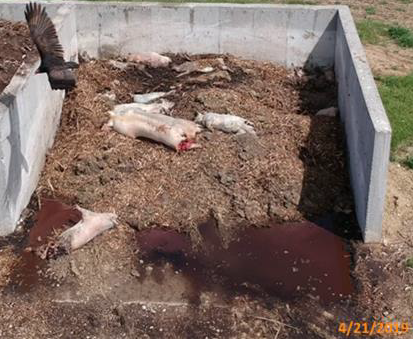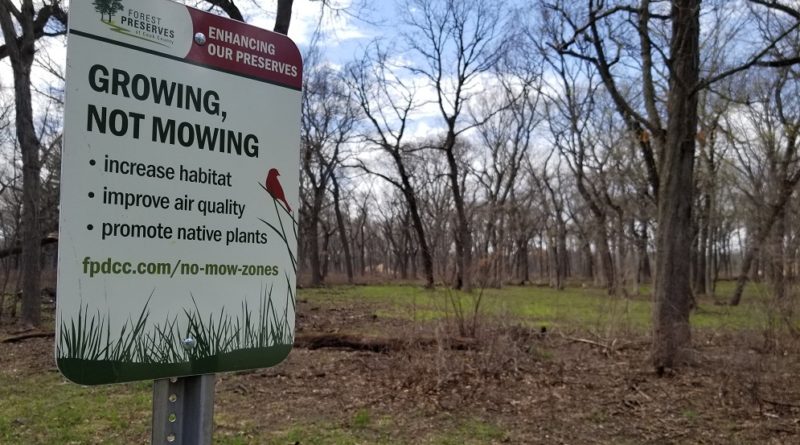Forest Preserves In the Age of Climate Crisis
Podcast: Play in new window | Download (Duration: 1:42:55 — 48.2MB)
Subscribe: Apple Podcasts | Spotify | Android | iHeartRadio | Podchaser | Email | TuneIn | RSS | More
Arnold Randall returns to the show
(June 9, 2019) This Tuesday, Peggy and I take our microphones to Daley Plaza to celebrate the Cook County Forest Preserves. We’ll be doing interviews at an event called Live Healthy, Discover Nature. It’s presented by the Forest Preserve District of Cook County (FPDCC) and its partners. The goal is to tell folks about all of the great things people can do and find in the preserves throughout the entire year. We will talk to Cook County Board President Toni Preckwinkle and others.
Thanks to the foresight of people more than 100 years ago, we have an embarrassment of riches. Here is the Forest Preserve District by the numbers.
- Nearly 69,000-acres of natural areas and Open Space
- 22 dedicated nature preserves.
- Biologically diverse, rare native forests, woodlands, savannas, prairies and wetlands
- 6 nature centers (offering education programs for all ages, interpretive trails and exhibits)
- 1 wildlife research facility
- 311 picnic groves
- 40 managed lakes and ponds
- 5 camps
- 7 major waterways
- 3 aquatic centers
- 10 golf facilities
- 300 miles of marked trails
It’s a lot to keep track of. But the 21st century adds even more demands, namely our climate crisis. As the FPDCC celebrated its centennial a few years ago, it rolled out the Next Century Conservation Plan. It was an acknowledgment that the preserves were in great need of restoration. But as that work began, there was no time for self-congratulations. The specter of climate catastrophe was already upon us, so it was time to quickly move to the next phase.
That phase is something called the Sustainability & Climate Resiliency Plan. It was adopted to address no less than climate change, pollution, invasive species, and habitat loss and fragmentation that threaten the health of global ecosystems. For example, in this area alone, more than a hundred of our native plant and wildlife species are being threatened or are on the precipice of becoming extinct.
That’s not good. Which is why it’s all hands on deck for every every forest preserve, every park, every backyard. Download the pdf to read it in full.
The Plan calls for reducing the Forest Preserves’ greenhouse gas emissions by 80% by 2050. It also explains how the Forest Preserves’ lands can be resilient in a changing climate. That’s a good thing, because a 2004 study found that, with nearly 70,000 acres of land, Forest Preserves ecosystems absorb 1,544,887 tons of CO2 annually.
Meanwhile, here’s how FPDCC will get it done.
- Utilities & Emissions – Reduce GHG emissions by 80%, while cutting annual energy usage at a pace of 4.5% year-over-year.
- Preserve Operations – Reduce GHG emissions through best practice adoption and operational changes, and by reducing transportation fuel usage and waste sent to a landfill at a pace of 4.5% year-over-year.
- Learning & Engagement – Enhance Forest Preserves educational offerings, strengthen public engagement, and expand access to empower both internal and external stakeholders to become better stewards of the Forest Preserves.
- Ecological Sustainability – Develop solutions that will address the impacts of a changing climate. Provide effective management practices that will ensure the long-term viability of Forest Preserves lands and water resources.
- Implementation & Advancement – Identify external opportunities and mobilize internal resources to bring the Sustainability & Climate Resiliency Plan goals into fruition.
 Okay, okay. There’s a little bit of bureaucratic speak in that. But the fact that this is being addressed at all is a sea-change from decades past. So, it’s with great pleasure that we welcome General Superintendent Arnold Randall to the WCGO studios this morning. I’m amazed that he was last with us six years ago(!), so we have a lot to catch up on.
Okay, okay. There’s a little bit of bureaucratic speak in that. But the fact that this is being addressed at all is a sea-change from decades past. So, it’s with great pleasure that we welcome General Superintendent Arnold Randall to the WCGO studios this morning. I’m amazed that he was last with us six years ago(!), so we have a lot to catch up on.
An organic farm on the brink
In December of 2018, we interviewed a woman named Crystal Clair, who is co-owner of a farm called Sunset Lake Organics in Adams County, Illinois. Her son Thad King, and Karen Hudson from the Socially Responsible Agricultural Project were also part of that conversation. Here’s what I wrote at the time.
…you should know is that there is 5,000-head concentrated animal feeding operation (CAFO) that would like to be established in the county. It’s part of a company called County Line Swine and, according to Illinois Citizens for Clean Air and Water (ICCAW) and the Socially Responsible Agricultural Project (SRAP), it “would be sited adjacent to a successful certified organic farm and near Adams County residents who have pre-existing health problems that would be impacted by the massive animal confinement.”
That organic farm is called Sunset Lake Organics, and it’s owned by Randy and Crystal Clair. According to their website, they have 540 acres of certified organic crops with 250 acres in transition. However, Crystal Clair is fighting breast cancer. Obviously, that would be a serious issue in the best of circumstances. But, as Midwest Organic & Sustainable Education Service (MOSES) reports, these are not the best of circumstances by a long shot.
You can click on to the link to find out that Sunset Lake Organics and other surrounding farms would be subjected to the usual horrors inflicted by CAFOs. They would have to endure the smells, the contaminated water, the loss of property values, etc. It’s all pretty well documented by now, but that doesn’t mean that the system is ready to change.
Our interview was on December 2. On December 24–you know, Christmas Eve–the Illinois Department of Agriculture approved the CAFO next door. Gosh, nice Xmas gift! Today, some six months later, we’re doing a follow up to that story. Thad King recently wrote to me to send me a timeline. Keep in mind that these are his observations.
December 24th, 2018 – Illinois Department of Agriculture (IDOA) approves site
December 27th, 2018 – IDOA Director (John Sullivan) named to new J.B. Pritzker Administration
January 6th 2019 – Construction starts without valid permits
February 22nd, 2019 – Illinois Environmental Protection Agency (IEPA) visits site
March 1st, 2019 – SWPPP (StormWater Pollution Prevention Plan) issued
March 19th, 2019 – Complaint filed for violations of NPDES (National Pollutant Discharge Elimination System) and SWPPP
March 26th, 2019 – Visit with John Sullivan (IDOA)
April 5th, 2019 – IEPA site visit
April 9th, 2019 – IEPA issues VN (Violation Notice — basically, they found issues that need addressing)
IDOA inspects. 31 pages of construction violations noted. All concrete was jackhammered out and left sitting at site. (Days of loud jackhammering followed by days of endless cement trucks kept my mom from being able to nap during the day, as she typically does due to her health and sleeping habits)
May 2nd, 2019 – IEPA conducts site visit
May 28th, 2019 – Complaint on runoff into a now clay-brown pond and into the subsequent receiving waters
May 28th, 2019 – IEPA responds that “enforcement process” is being followed
Meanwhile, Thad King reports that, “During all of this, the site also filed a retaliatory complaint about our ‘composting’ operations even though the ground in the complaint is for farming operations. The IEPA visited and threatened to investigate us further on our site, more than they initially did for the numerous and legitimate complaints we filed on the actual violators.”
If you’re keeping score, this means that the company that will soon be despoiling water and land with untold amounts of pig waste is complaining about an organic operation moving soil around. This is what we call a classic case of chutzpah.
But that’s just the adjacent site. There is another site, just down the road, that has been cited for numerous violations. In the words of Thad King,
In December of 2018, a complaint was filed showing how the runoff was still occurring. From the IEPA’s inspection, the owner was asked for a timeline on when a roof could be installed and was told that an earthen berm may help.
 In May of 2019, the Department of Agriculture was contacted for breaking the law regarding composting activities and improper handling of carcasses. This below image of the compost site with carcasses laying on top was taken just over a month ago. These are part of the materials which are now running into the pond and likely entering the waterways.
In May of 2019, the Department of Agriculture was contacted for breaking the law regarding composting activities and improper handling of carcasses. This below image of the compost site with carcasses laying on top was taken just over a month ago. These are part of the materials which are now running into the pond and likely entering the waterways.
This is what it looks like. Not pretty. Apparently, those carcasses were there, uncovered by carbon material, for about three weeks. Is this what farming in America looks like today?
Note that the runoff from this compost pile was visibly leaching into nearby water sources.
Thad King and Crystal Clair will tell us more on this morning’s show.
And Karen Hudson reports on yet another CAFO, called Buffalo Run Sow Farm, which is planned for Marshall County. She also tells us about an important study by Danielle Diamond of SRAP and Loka Ashwood, an assistant professor in the department Agricultural Economics and Rural Sociology at Auburn University.
They wrote a paper called Property rights and rural justice: A study of U.S. right-to-farm laws for the Journal of Rural Studies. They write that
Our analysis of statutes in all 50 U.S. states finds that right-to-farm laws, while largely purported to defend family farmers, reduce rural people’s capacity to protect their land through nuisance actions in defense of their environmental, health, and community rights. We argue that property rights, when properly protected from nuisance, can help rural people push back against the market economy in defense of their health and environmental rights when other political means falter.
In other words, “right-to-farm” laws are really “right-to-exploit-rural-folks” laws. We’ll talk about that today, as well.

